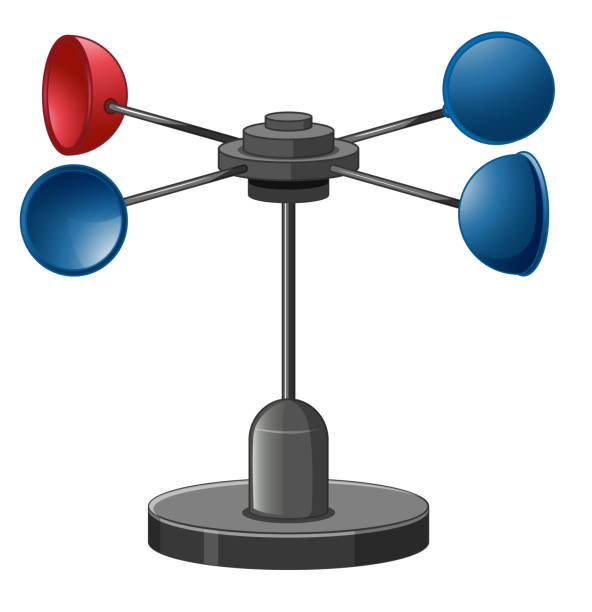Top Features to Look for in an Effective Anemometer for Accurate Wind Measurement
Top Features to Look for in an Effective Anemometer for Accurate Wind Measurement
Blog Article
All You Required to Know About Anemometers: How They Function, Why They Matter, and Where to Use Them
Anemometers, however usually ignored in the realm of clinical instruments, play a vital function in various areas, providing valuable understandings right into wind rate and air movement patterns. Comprehending the mechanics behind these devices is vital for anybody seeking to harness the power of this data. From meteorologists tracking climate patterns to designers designing frameworks with wind loads in mind, the applications of anemometers are significant and varied. As we look into the ins and outs of anemometer technology, we will discover the inner functions of these tools, their significance, and the crucial considerations when selecting the ideal anemometer for particular applications.

Anemometer Essentials
An important tool used to gauge wind speed and instructions, the anemometer plays a crucial duty in weather forecasting and numerous markets. An anemometer typically contains 3 or 4 cups that rotate in the wind, a vane that aims into the wind, and sensing units to track the turnings or motions. By computing the turnings or motions over a particular time period, the anemometer can figure out wind speed. The vane helps establish wind instructions by directing into the wind, providing beneficial information for weather forecasting, aviation, maritime procedures, environmental monitoring, and wind energy applications.
There are various types of anemometers readily available, including mug anemometers, vane anemometers, hot-wire anemometers, and sonic anemometers, each with its distinct attributes and applications. Cup anemometers are frequently used for fundamental wind rate dimensions, while vane anemometers are preferred for directional measurements. Hot-wire anemometers are appropriate for low airspeeds, and sonic anemometers are perfect for high-precision measurements in research and commercial settings. Recognizing the basics of anemometers is essential for precise wind information collection and analysis across different markets.
Concepts of Anemometer Operation
Building on the foundational understanding of anemometer essentials, the concepts of anemometer procedure elucidate the auto mechanics behind wind rate and instructions dimensions. Anemometers operate on the principle of air movement impacting a sensing unit, causing it to revolve. Cup anemometers, for circumstances, have 3 or more mugs that capture the wind, creating them to spin much faster as the wind rate increases. The rotation rate is then exchanged a wind speed dimension. Vane anemometers, on the various other hand, utilize a tail or a probe that straightens itself with the wind instructions, giving a dimension of wind direction based on the orientation of the sensing unit. Hot-wire anemometers rely upon a warmed cord that cools down as wind passes over it, with the rate of cooling identifying the wind speed. Ultrasonic anemometers step wind speed and instructions by analyzing the moment it considers ultrasonic signals to take a trip between transducers. Comprehending these principles is vital for trustworthy and exact wind dimensions in numerous applications.
Significance of Anemometers
Anemometers play a crucial role in determining wind rate and instructions, supplying necessary data for weather condition forecasting, environment studies, ecological monitoring, and check my site air travel procedures. Meteorologists depend on anemometers to collect accurate wind data, assisting them comprehend weather condition patterns, anticipate tornados, and problem prompt cautions to the public. Wind ranch operators use Full Report anemometers to assess wind conditions and optimize electricity manufacturing from wind turbines.
Applications Across Numerous Industries
Applications of anemometers extend across varied markets, showcasing their adaptability and utility beyond weather forecasting. In the sustainable power sector, anemometers play a critical role in examining wind problems for wind ranch positionings, guaranteeing optimal energy manufacturing. Industries like building and construction and mining make use of anemometers to keep track of wind speeds, crucial for safety procedures, especially when working at elevations or in open-pit mines where solid winds can position hazards. Anemometers are additionally essential in the air travel market, helping pilots in recognizing airspeed and wind instructions for risk-free take-offs and touchdowns. The maritime industry take advantage of anemometers for ship navigation, aiding seafarers expect weather changes and readjust routes appropriately. In farming, anemometers aid farmers in managing crop splashing by giving real-time data on wind speed to stay clear of drift. Anemometers discover applications in A/c systems to maximize airflow and enhance energy effectiveness in structures. The varied usage instances of anemometers underscore their importance across different markets, highlighting their crucial role in enhancing functional safety and effectiveness (anemometer).

Choosing the Right Anemometer for Your Requirements
For basic objectives, a cup anemometer is suitable for determining wind rate, while a vane anemometer find out here now supplies wind direction data. Hot-wire anemometers are optimal for low airspeed measurements, and ultrasonic anemometers provide high accuracy and sturdiness.

Conclusion
To conclude, anemometers play a critical role in determining wind rate and direction throughout different sectors. Recognizing the concepts of anemometer operation is necessary for selecting the best tool for details requirements. From meteorology to air travel, anemometers are crucial devices for making sure and gathering exact data security in different applications. It is essential to think about the value of anemometers in order to make enlightened decisions when choosing one of the most suitable device for gauging wind problems.
There are various kinds of anemometers readily available, including mug anemometers, vane anemometers, hot-wire anemometers, and sonic anemometers, each with its unique attributes and applications. Cup anemometers are typically utilized for standard wind speed dimensions, while vane anemometers are chosen for directional measurements. Hot-wire anemometers are suitable for reduced airspeeds, and sonic anemometers are perfect for high-precision measurements in research study and commercial settings.Building on the foundational understanding of anemometer essentials, the principles of anemometer operation elucidate the auto mechanics behind wind speed and instructions dimensions. For basic objectives, a mug anemometer is appropriate for determining wind speed, while a vane anemometer offers wind instructions information.
Report this page